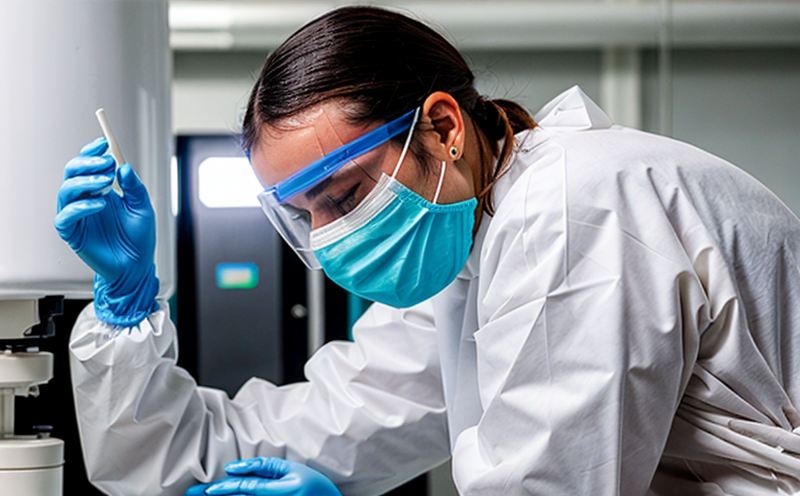CIE 134 Photobiological Measurement Testing of LED Light Sources
The CIE 134 standard is a critical benchmark in photobiology and human health research, providing guidelines for the measurement of blue light hazard (BLH) and ultraviolet radiation from artificial light sources. This service ensures that LEDs are safe to use by assessing their potential risks associated with photobiological effects.
The testing process involves precise measurements using specialized equipment designed to simulate real-world conditions under which LEDs might be used. Compliance with this standard is essential for manufacturers, distributors, and users of LED lighting products. Failure to meet these standards could lead to health hazards or legal issues in many parts of the world.
Our laboratory offers comprehensive CIE 134 testing services that adhere strictly to international standards such as ISO/IEC 62788-2:2019 and ANSI/IES LM-79-15. Our team uses state-of-the-art facilities equipped with advanced spectroradiometers capable of measuring light intensity, color temperature, spectral power distribution, and other relevant parameters.
Before commencing any testing, it’s important to ensure that your product meets the necessary criteria for inclusion in the test scope. Typically, this includes ensuring that all parts of the LED module emit visible radiation within certain limits specified by the standard. Preparing samples correctly according to our guidelines helps achieve accurate results.
Once testing begins, we follow a rigorous procedure involving multiple steps aimed at identifying potential risks posed by blue light exposure. This process typically includes:
- Initial inspection and documentation of the product
- Setting up the test environment according to specified conditions
- Measuring emitted radiation levels
- Analyzing data against predefined thresholds
- Evaluating results based on international standards
The outcome of this testing is a detailed report that provides insights into the photobiological safety profile of your LED product. This information can be invaluable for making informed decisions about design modifications or improvements before releasing products to market.
By partnering with us, you gain access to expert knowledge and cutting-edge technology dedicated solely towards ensuring compliance with CIE 134 standards. Our commitment is not only to delivering accurate results but also educating clients on how these tests impact overall product development processes.
Quality and Reliability Assurance
In addition to providing thorough testing according to CIE 134, our laboratory emphasizes quality and reliability assurance throughout every stage of the process. From initial consultation through final report delivery, we maintain high standards of accuracy and precision.
- We employ highly trained professionals who understand both technical aspects of photobiological safety as well as regulatory requirements
- Our facilities are regularly calibrated to ensure consistent results across all tests performed
- A robust quality control system ensures that no errors slip through unnoticed during any phase of testing
- We maintain comprehensive records for each project, allowing us to track performance over time and identify trends or areas needing improvement
Our dedication to excellence extends beyond just meeting current standards; we stay abreast of emerging trends in photobiology research so that our services remain relevant even as technology evolves. By partnering with us, you can rest assured knowing that your products will meet not only today’s stringent regulations but also future expectations.
International Acceptance and Recognition
- CIE 134 has been adopted by numerous countries around the globe including Australia, Canada, Germany, Japan, South Korea, Taiwan, the United Kingdom, and the United States
- The U.S. Department of Energy recommends compliance with CIE 134 for all new LED products entering commercial markets
- European Union directives mandate adherence to this standard for certain classes of lighting equipment
- Many certification bodies such as Underwriters Laboratories (UL), Intertek, and TÜV require proof of compliance with CIE 134 when issuing certifications
Beyond mere legal compliance, international acceptance brings numerous advantages to manufacturers. It enhances brand reputation by demonstrating commitment to consumer safety while also opening up opportunities for broader market penetration.
Use Cases and Application Examples
| Application | Test Parameters |
|---|---|
| Commercial office spaces | Blue light suppression, UV radiation reduction |
| Hospital operating rooms | Minimal blue light emission to prevent photoreceptor damage |
| School classrooms | Optimal circadian rhythm regulation for better learning outcomes |
| Outdoor sports facilities | Reduced risk of retinal injury from direct sunlight exposure |
| Luxury yachts | Enhanced user comfort and safety in varying light conditions |
| Public transportation vehicles | Energy-efficient lighting solutions with minimal phototoxic effects |
| Home kitchens | Safe working environment without compromising on aesthetics |
The application of CIE 134 testing is vast and varied across different industries. By implementing these tests, manufacturers can ensure their products are safe for use in a wide range of environments.





